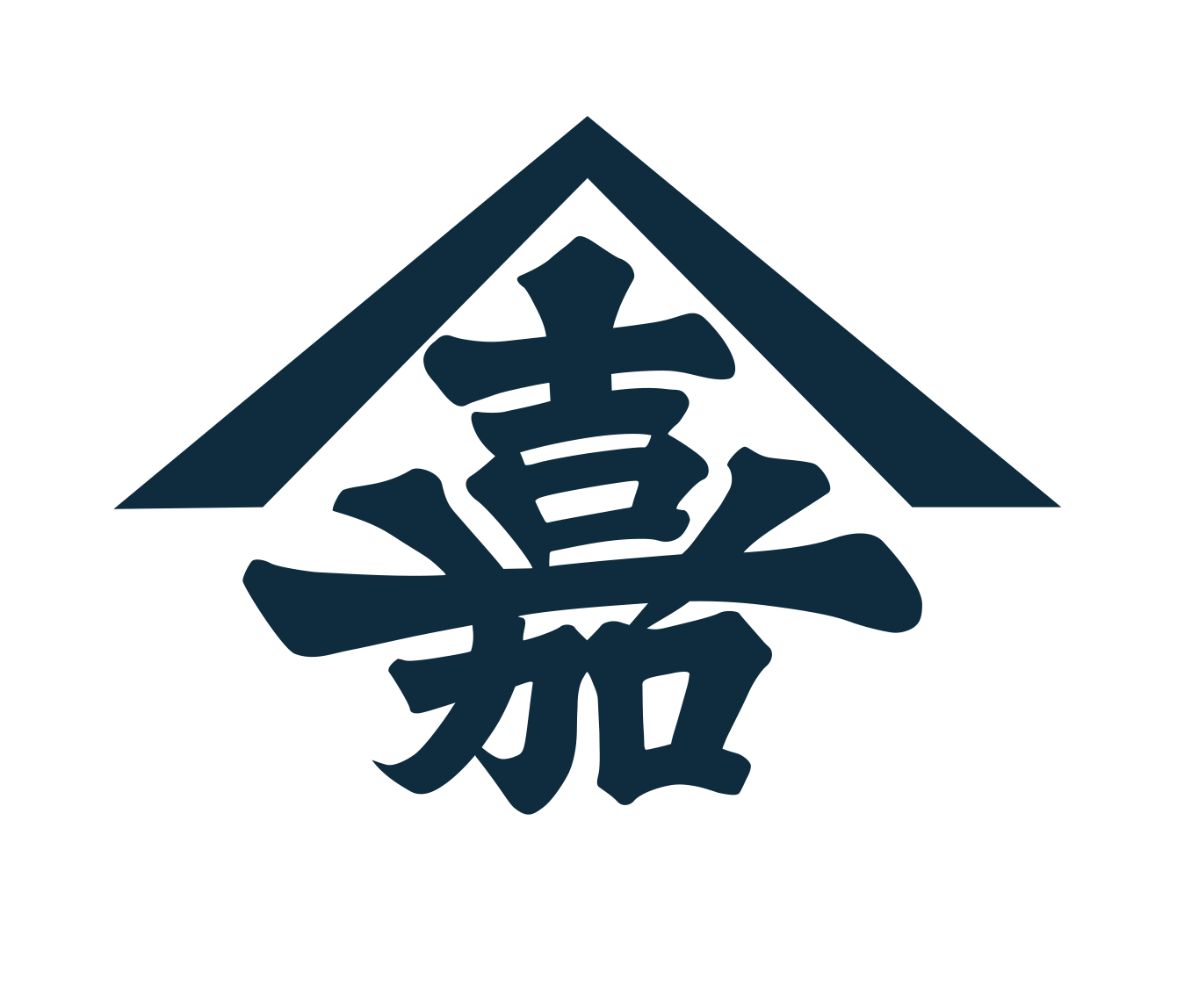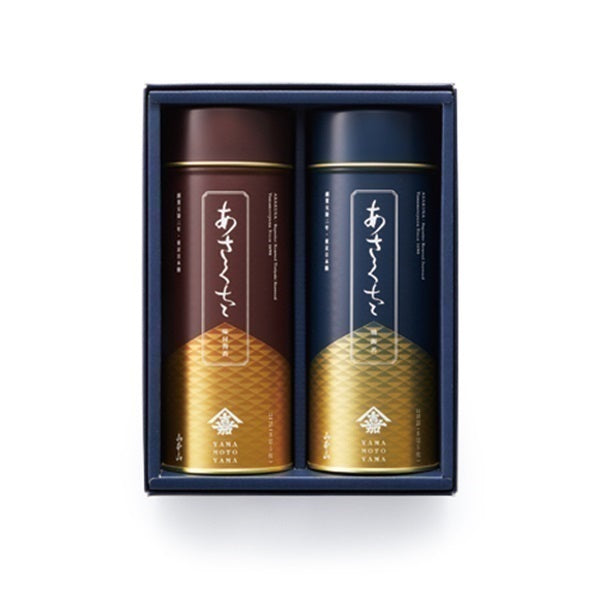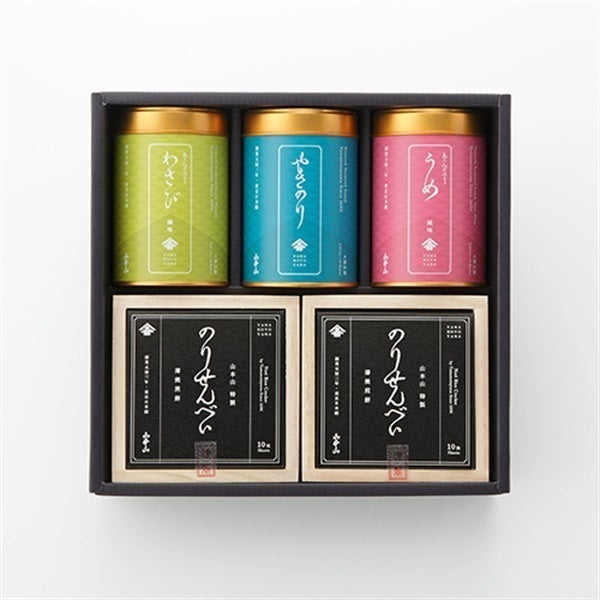
Gift-giving basics: A thorough explanation of gift-wrapping and mizuhiki etiquette
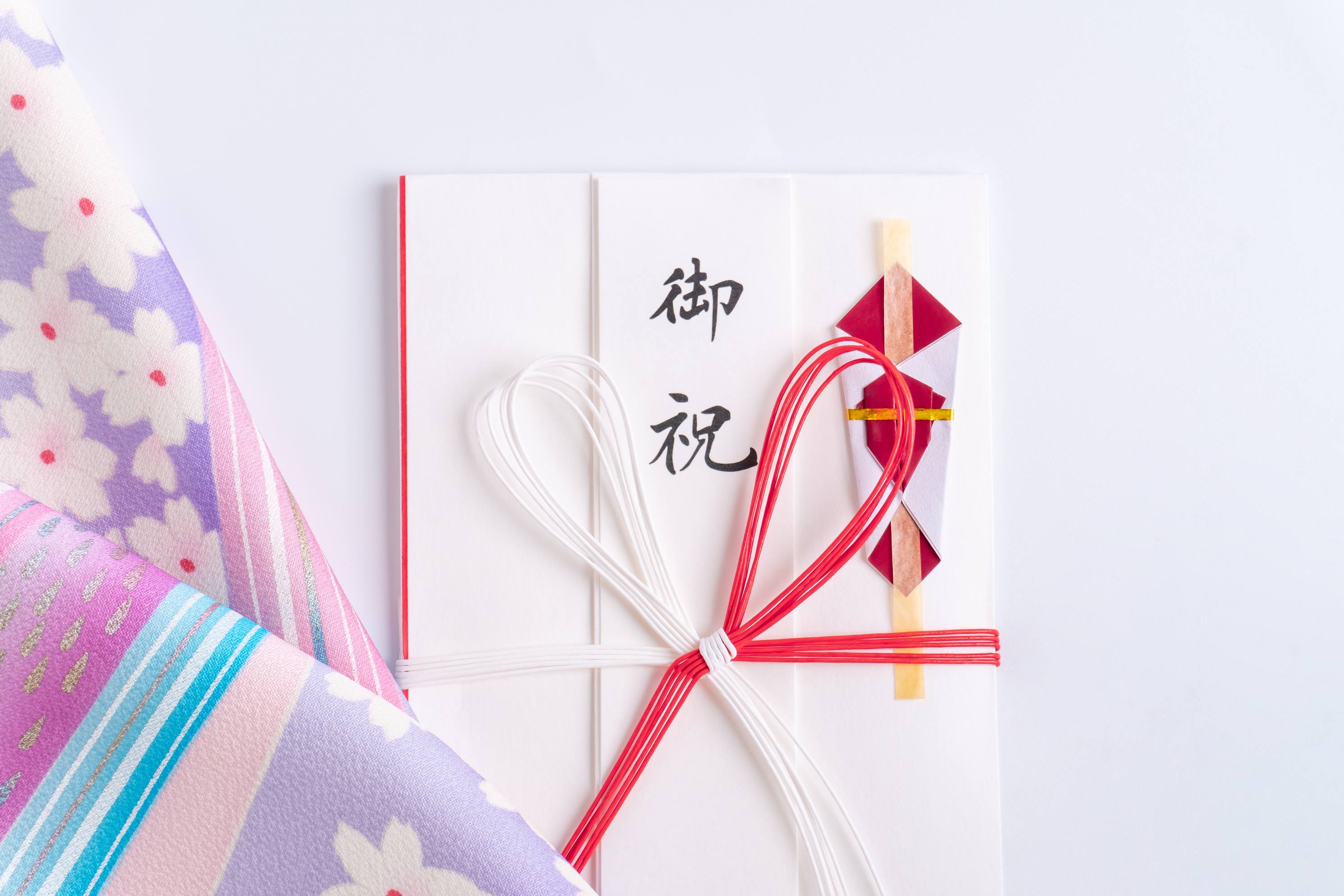
Surprisingly little known
The difference between noshi paper and wrapping paper
The decoration on the top right corner of gift envelopes and gift wrapping paper is called "noshi," which was originally an abbreviation of "noshi awabi (abalone that has been thinly stretched and dried)."
Abalone has been a valuable food since ancient times, and was used as an offering in religious ceremonies, and dried abalone was a typical gift. Later, abalone was also attached to gifts, and has remained as decoration until the present day.
Nowadays, noshi are often printed and simplified, and "noshi paper" is used, which is a paper with noshi and mizuhiki printed on it.
Noshi are only used for celebrations and general gifts, so for funerals, condolences for sick people, or disaster relief gifts, noshi is used and instead "kakegami" with only mizuhiki printed on it is used.
selection
Wrapping paper available at Yamamotoyama
There are two types of wrapping paper. First, check whether you want a noshi paper or wrapping paper depending on the purpose.
- "Noshi paper" used for seasonal gifts and celebrations
- A regular wrapping paper used for funerals, without a noshi.
Mizuhiki is printed on all wrapping paper. There are three types of Mizuhiki for celebrations:
- Red and white bows are used for seasonal gifts and general celebrations
- "Red and white knotted strings (5 pieces)" used for condolence gifts, thank-you gifts for condolences, and get-well gifts
- "Red and white knotted strings (10 pieces)" used for wedding-related celebrations, return gifts, wedding favors, and congratulatory gifts
There are two types of wrapping paper used for funerals. Please choose the one that suits your region and customs.
- Black and white 5-wire cut
- Yellow and white 5-strand cut
Please note that we have five types of inscriptions for condolences. Please choose one on the selection screen.
- Shi: Primarily used as a gift in return for a condolence gift, but also as a thank-you gift from the bereaved family to those attending the wake, funeral, or annual memorial service on the day of the funeral. It is mainly used in the Kanto region.
- Crude offering: Same usage as above. Mostly used in the Kansai region.
- Offerings: Used as wrapping paper for offerings at wakes and funerals.
- Manchu-inshi: Used as a gift in return for a condolence offering sent after the 49th day memorial service.
- Memorial service: Almost synonymous with spirit and simple offering. Can be used regardless of sect.
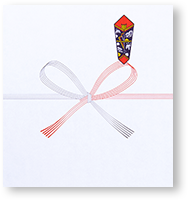
Uses: General celebrations, gifts, greetings, souvenirs
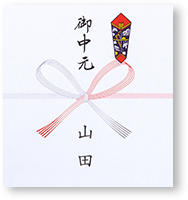
Use: Summer gift
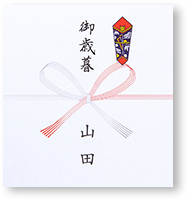
Use: Year-end gift
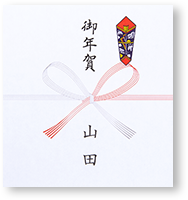
Use: New Year's gift
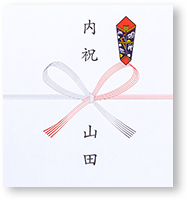
Use: Celebrations (birth, school entrance)
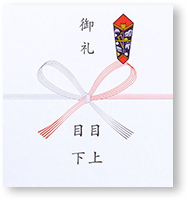
Use: Gift
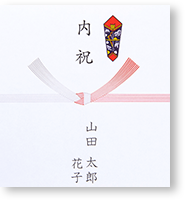
Use: Wedding gift
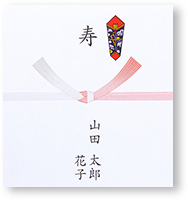
Use: Wedding gifts, souvenirs
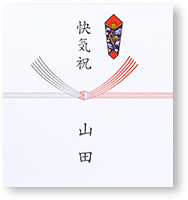
Use: Get well soon gift
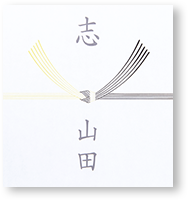
Usage: Funerals *Yellow and white Mizuhiki is also available

Mizuhiki
The role of Mizuhiki, its color and number, and how to tie it
水引とは
水引とは、贈答品の包み紙などにかける紅白や黒白などの帯紐のことです。単に包を結び止めるだけでなく、送り主の心を表現するため、色や結び方にはいくつかの種類があります。
山本山のオンラインショップでは、水引が予め印刷されたのし紙やかけ紙をご用意しています。
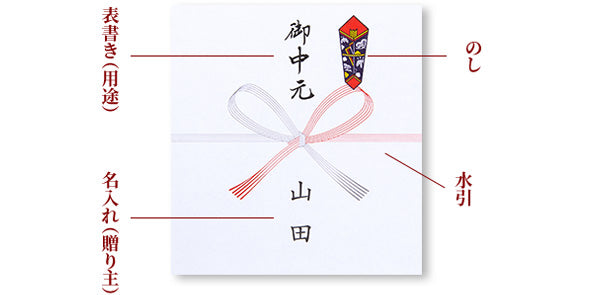
Color and number
The color and number of Mizuhiki
The colors of mizuhiki available at Yamamotoyama's online shop are red and white, black and white, and yellow and white.
For general gift-giving and celebrations, red and white are used, while black and white or yellow and white are used for funerals. Please note that the colors of Mizuhiki used for funerals may differ depending on the region, customs, and religion.
In many cases, the number of mizuhiki is an odd number, such as a set of 5. For wedding gifts, a noshi paper with 10 mizuhiki printed on it is used, with two sets of 5 mizuhiki printed together, to represent the union of two families or a man and a woman.
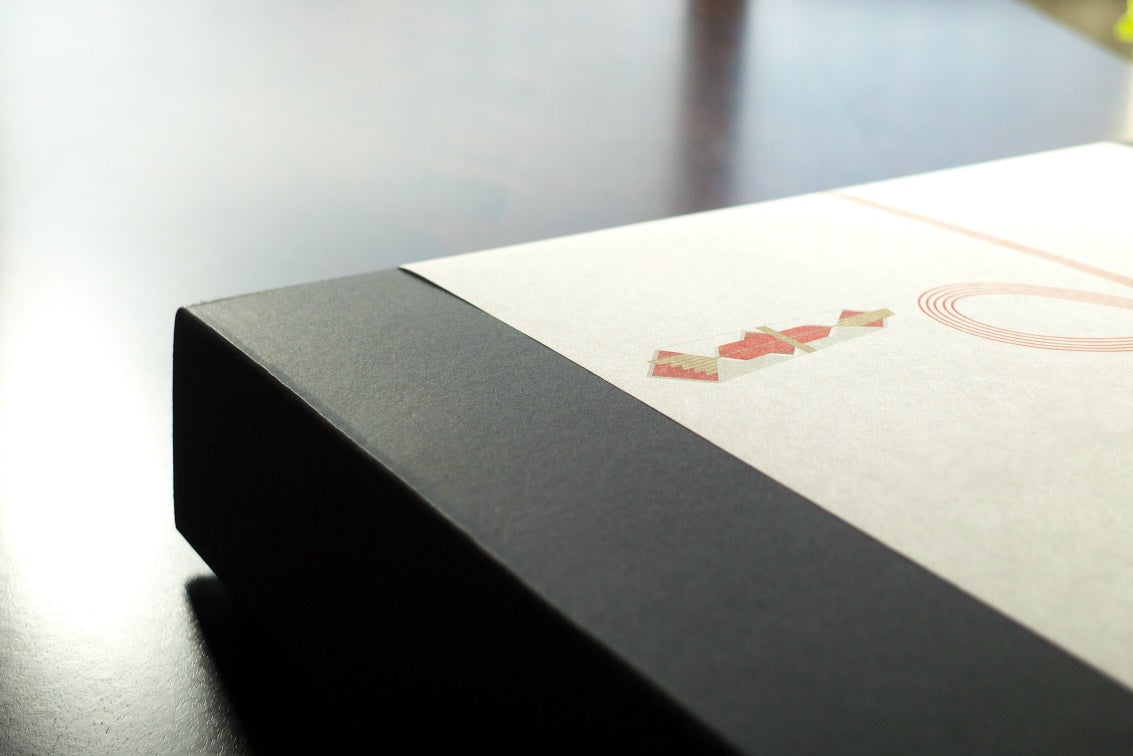
How to tie
How to tie Mizuhiki
There are two ways to tie mizuhiki that you can choose from at Yamamotoyama's online shop: "musubikiri" and "bow knot".
Musubikiri is used for once-in-a-lifetime celebrations (such as weddings), as well as funerals and condolences, with the hope that misfortune will not occur again.
Bows are used for celebrations and general gifts that can be repeated any number of times.
Omotegaki and Name engraving
How to write the cover and name
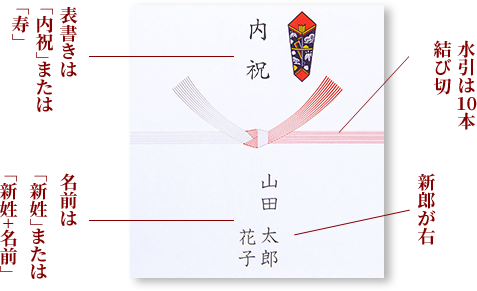
When giving a gift, you write a message on the wrapping paper or noshi paper. By writing a message on the wrapping paper, you can clarify what the gift contains and also express the sender's feelings.
Writing the name of the giver on the bottom of the Mizuhiki is called "name-ire". When there is only one sender, it is generally standard to write both the "family name" and the "first name". However, in cases such as in return for a condolence gift, where a family name is more appropriate than an individual's name, it is sometimes necessary to write only the "family name".
When writing the names of a husband and wife, the male name is generally written on the right and the female name on the left.
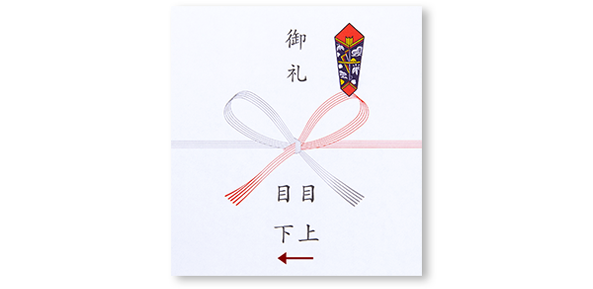
Joint name
When you want to give a gift in joint names
When two or more people wish to give a gift in the name of a joint recipient, the names should be written from right to left, starting with the person with the highest rank or age. If there are people of the same rank, they should be written in alphabetical order from right to left. The names should be limited to about three people, and to the left of the representative's name, "and others" should be written, or the name of a company or organization may be written without a name.
list
List of types of inscriptions and how to choose Mizuhiki
Below is a list of common types of inscriptions. Please refer to this along with whether or not a noshi is used, the type of mizuhiki used, etc.
| 目的 | 表書き | のし・水引 |
|---|---|---|
| 季節の贈り物 | 御中元、御歳暮、御年賀、賀正、迎春、暑中御見舞、暑中御伺、残暑御見舞、残暑御伺、寒中御見舞、寒中御伺、余寒御見舞、余寒御伺 | のしあり 紅白5本蝶結び |
| 通夜・葬儀・法要のお供え | 御供 | のしなし 東日本:黒白結び切り 関西圏:黄白結び切り |
| 会葬御礼 | 宗教問わず:志 仏式:会葬御礼、粗供養 神式、キリスト式:偲び草 |
のしなし 東日本:黒白結び切り 関西圏:黄白結び切り |
| 法要(霊祭)の引き物 | 宗教問わず:志 仏式:○回忌志、粗供養 神式、キリスト式:偲び草 |
のしなし 東日本:黒白結び切り 関西圏:黄白結び切り |
| 香典返し | 宗教問わず:志 仏式:関西圏で満中陰志 神式、キリスト式:偲び草 |
のしなし 東日本:黒白結び切り 関西圏:黄白結び切り |
| 結婚 | 贈る時:寿、御祝 お返し:内祝、御礼 |
のしあり 紅白10本結び切り |
| 出産 | 贈る時:御出産祝、ご誕生祝 お返し:内祝 |
のしあり 紅白5本蝶結び |
| 新入学 | 贈る時:御入学祝、合格御祝 お返し:内祝 |
のしあり 紅白5本蝶結び |
| 長寿 ※長寿祝い一覧(数え年表記)/ 還暦(61)、緑寿(66)、古稀(70)、喜寿(77)、傘寿(80)、半寿(81)、米寿(88)、卒寿(90)、白寿(99)、百寿(100) |
贈る時:寿、御祝 お返し:内祝 お返し:内祝 |
のしあり 紅白5本蝶結び |
| 病気見舞 | 贈る時:御見舞、御全快祈念 お返し:快気祝 |
贈る時:のしなし お返し:のしあり 紅白5本結びきり |
| 出産 | 贈る時:御出産祝、ご誕生祝 お返し:内祝 |
のしあり 紅白5本蝶結び |
| 手土産 | 表書きなしの無地のし | のしあり 紅白5本蝶結び |
| 感謝 | 謝礼、御礼 | のしあり 紅白5本蝶結び |
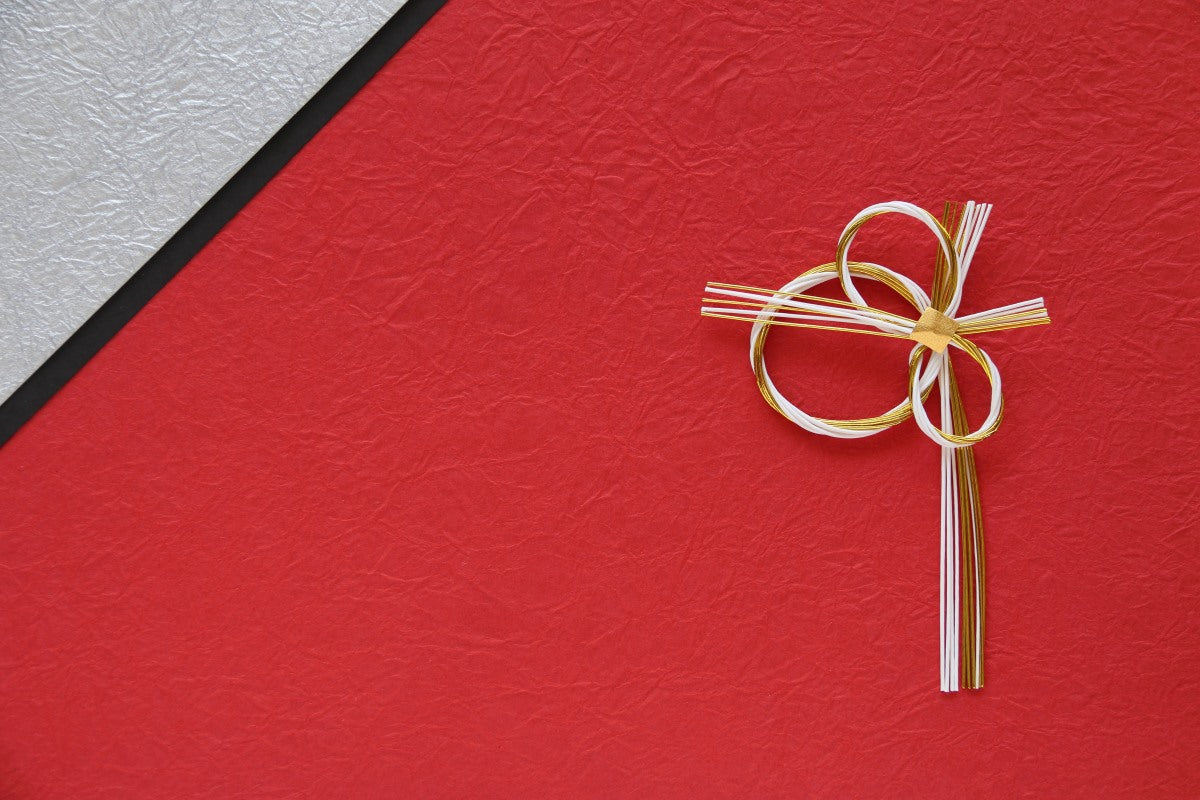
Q and A
Frequently asked questions
Below are some frequently asked questions we receive from customers regarding etiquette regarding wrapping paper, gift tags, mizuhiki, name engraving, and gift tags.
Q:「外のし」と「内のし」、どちらを選べばいいですか?
A:「外のし」と「内のし」の使い分けに、厳密な決まりはございません。
山本山のオンラインショップで商品をご購入いただく場合、配送上の観点から、基本的には贈り物の箱に直接のし紙をかけ、その上から包装紙で包む「内のし」となります。「外のし」をご希望の場合は、オンライン上でのし・包装紙のご指定をいただく際に、その旨記載をお願いいたします。
一般的には、贈り物を直接持参する場合や、結婚に関することなどに「外のし」が多く用いられます。
Q:英字を含む名前の場合、どのように名入れをすればいいですか?
A:山本山では全角英数字を、縦書きにして印刷します。
Q:忌中・喪中期間でもお歳暮を贈っても良いのですか?
A:「お歳暮」は日頃お世話になっている人に感謝の気持ちを伝えるもので、「お年賀」のようなお祝いごととは違います。したがって、贈る方や贈られる方が喪中でも、お歳暮を贈ってもかまいません。ただし、忌中の場合はお歳暮を控えるのがマナーとされています。
Q:喪中の場合は、熨斗を使っても大丈夫ですか?
A:喪中の場合は、紅白の水引の熨斗は避け、白黒の水引や無地の掛け紙を使用します。これは、相手が喪中であっても自分が喪中であっても同じです。
